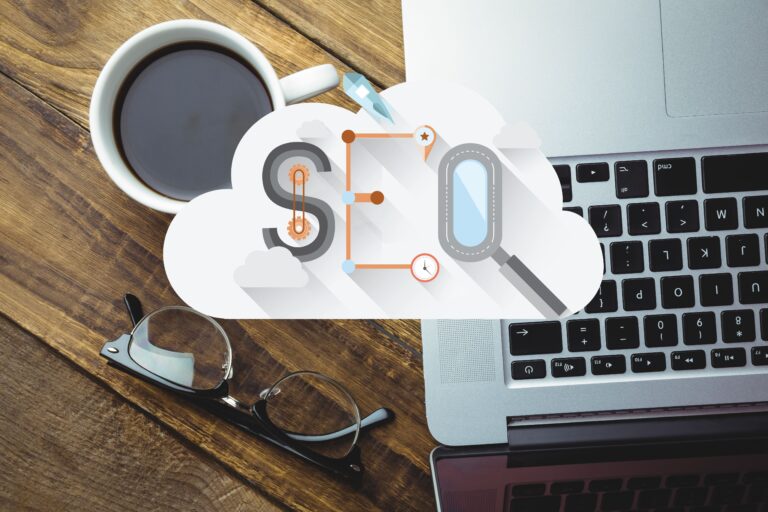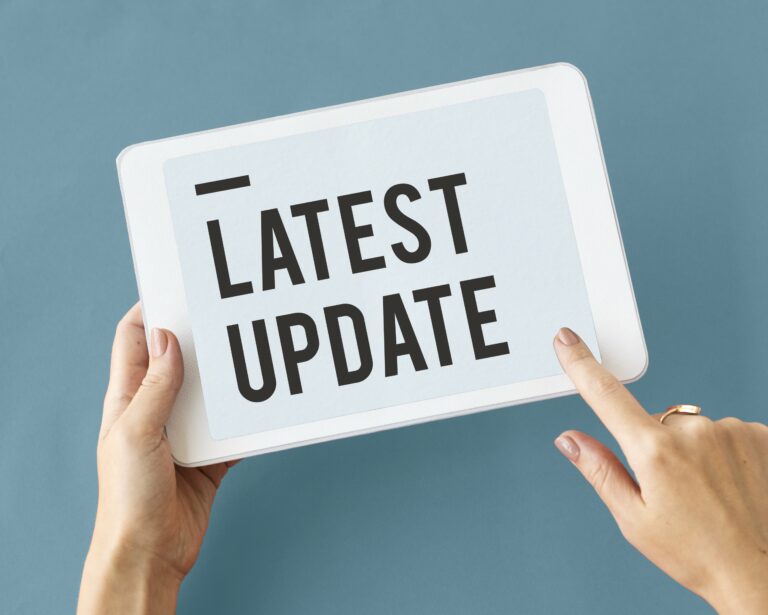Outside of spam, 333 billion emails were sent worldwide in 2022. In the time it takes to read this simple sentence, over 100,000 emails have been received all over the world. With these figures, it’s hard to believe that email is dead and that social networks have taken over. Emailing remains a powerful marketing tool. In this article, we will guide you through the essential elements to set up an effective newsletter strategy.
Newsletter: What are the Advantages for My Business?
The regularly sent newsletter is a powerful communication tool that can help you achieve your marketing goals. Let’s explore its effects!
Increase Your Business Visibility
The newsletter is a direct and effective communication channel to reach your clients. It serves not only to promote your news – products, promotions, events – but also to strengthen your brand image. A regular newsletter establishes a trusting relationship with your audience.
Every newsletter sends is a new opportunity to improve your visibility. Here, consistency is the key to success. For example, you can consider sending a weekly newsletter featuring the latest trends in your industry and how you adapt to them. From the design of your newsletter to the email subject, everything must be thought out to ensure a high open rate.
Example: Airbnb saw its reputation soar thanks to its newsletter. By using an ultra-personalized and engaging approach, Airbnb managed to captivate its audience. Their emails are filled with attractive images, catchy headlines, and relevant content to spark interest in their subscribers.
Build Your Database
In addition to maximizing your business visibility, the newsletter is the perfect way to feed your customer database. When they subscribe to your newsletter, your clients give you permission to contact them regularly. Offering content, seeking referrals, or presenting novelties are all pretexts to record more information about the people in your database. An effective way to build a strong long-term relationship.
Once processed, this information can be the subject of precise behavioral segmentation in your newsletter tool.
For example:
- Identify the top 100 subscribers who refer the most new clients.
- Identify the portion of subscribers who haven’t clicked on any link in any newsletter for over 18 months.
- Identify the most responsive customers to your newsletters.
Generate Leads
From newsletter sign-up to appointment requests, there are only a few steps! By strategically leveraging your database, your content strategy will be stronger. If you add a newsletter tool like Acymailing to that, you can go fishing for new leads. Personalizing your content is the most effective way to increase reader engagement. Make each email as specific as possible to the individual receiving it. Use the information you have to segment your list and select the most appropriate content based on the needs and aspirations of your subscribers. This way, your audience will feel considered for who they are and is more likely to move forward in your conversion funnel.
Keep in mind that each of your subscribers is unique, and you’ll need to run multiple campaigns to see results.
Best Newsletter Strategies to Follow
Now that the advantages of a newsletter are clearer for your business, let’s see how to implement an effective newsletter strategy.
Follow the Rules of the Game
Yes, your subscribers’ inbox has its legal framework! Specifically, be careful to respect the registration conditions and obtaining consent from your recipients to contact them (the famous opt-in). Stay vigilant about changes in GDPR rules. Finally, don’t forget to give your subscribers the option to easily unsubscribe.
Define Your Goals and Audience
Before thinking about writing, think about your email strategy! The essential first step is to choose the goals of your newsletter. You can consider launching it to improve the awareness of your product or service, generate leads, or retain your existing customers. A well-defined goal guides you in creating content that is suitable and of quality for your newsletter.
The second step is to get to know your audience. It’s about knowing who will be the recipients of your newsletters. What are their interests? Their needs? This knowledge will allow you to adapt your content and make it more attractive to your subscribers.
Integrate Audience Segmentation
No one appreciates receiving a series of emails perceived as uninteresting or irrelevant. To avoid this, audience segmentation is a crucial step to maximize the performance of a newsletter.
This involves creating distinct audience groups within a customer base based on criteria you define. Geographic location, age, gender, recent or older buying behavior… There are as many subgroups as possible criteria!
Each targeted subgroup by segmentation should receive a personalized newsletter that corresponds to its preferences and interests. A good segmentation helps maintain audience engagement.
Example: A brand of food products has segmented its audience into several groups based on the percentage of organic products its subscribers usually buy. There is a group of subscribers who consume over 50% organic products, another group under 30%, and finally a third group of subscribers who do not buy organic products.
Write a Catchy Title
Creating an attractive newsletter relies heavily on building catchy email titles.
Visible in the email subject, the title is the key to opening your email. Ensure it is clear, concise, and catchy. And always keep in mind that the open rate of your email depends heavily on the quality of your title.
- Avoid aggressive commercial titles and the immediate highlight of your subject. Prefer to attract attention rather than trying to find the idea that will make the sale in three words.
- Ask a question: they arouse curiosity and encourage the reader to learn more;
- Use numbers: numbers are concrete and easy to understand;
- Be thematic: send content about the news of your target audience.
Optimize the Newsletter for Mobile
We all do it, many emails are opened on our smartphones. Yet, how many times have we received an unreadable email? Your newsletter template must be responsive for optimal viewing of your content. Whatever your template, the important thing is to ensure that your newsletter is a pleasant experience for your readers, no matter the device used.
Personalize the Content
Personalizing your newsletter shows your recipients that you care about them and that you offer meaningful content.
To personalize your newsletter, consider:
- Using the first name of your recipients;
- Segmenting your mailing list to increase the relevance of your message;
- Using demographic data from your database, such as age, gender, or place of residence, to personalize your newsletter.
Keep in mind the needs and interests of your recipients when writing your content.
Adapt the Sending Frequency
The sending frequency of your newsletter is also important. Too many messages may push your subscribers to unsubscribe. And if you don’t send enough emails, you risk being forgotten by your audience. The ideal sending frequency depends on your industry, target audience, and marketing goals.
To adapt the sending frequency of your newsletter, test different approaches, and pay attention to their rates.
Use A/B Testing
A/B testing is a testing method that involves comparing two versions of the same element to determine which one has a positive impact on your goal. Whether it’s generating traffic to your social networks, your website, or maximizing your open rate, creating a variant of your email can have unexpected effects!
With Acymailing, for example, you can conduct A/B tests
on your titles, content, email designs, segments, or even the frequency of sending. To succeed in your tests, remember:
- Test only one element at a time to clearly identify its impact.
- Send your two email versions to a sufficiently large sample to obtain significant results.
- Carefully analyze the impact of the A/B test in relation to your priorities.
Use Effective Call-to-Action (CTA)
A newsletter without a call to action is a story without an end. Your reader may have liked your content, but they are ready to learn more, and… nothing. You leave them in the middle of nowhere. This is where the call-to-action or CTA comes in.
To build effective call-to-action, you’ll need to:
- Define your marketing goals: you won’t use the same phrases depending on whether you’re trying to generate traffic, engage on social media, promote a new product, or get leads.
- Identify your target audience: the tone and terms used vary depending on the familiarity of the target with your brand, their interests, and needs.
- Maintain consistency with the content: depending on what your newsletter contains, the chosen CTA should be appropriate.
- Be clear, concise, and convincing: at a glance, your recipients should understand what you expect from them.
- Make it omnipresent: a successful CTA is visible. You reduce your chances of success every time you add multiple different calls to action.
- Conduct A/B tests: the call to action is the perfect example of elements to test to maximize your chances of achieving your KPIs.
Example: “Download the ebook”, “Sign me up”, “Order”, “Read the article”, or “See the offer” are clear and concise calls-to-action.
Measure the Results
There is no improvement without analyzing results, and no results analysis without tools to measure them. To check your performance, you can use the most common Key Performance Indicators (KPIs) in newsletters:
- Open Rate: the percentage of subscribers who opened your newsletter. The higher it is, the more your content interests and captivates your audience.
- Click-Through Rate (CTR): the percentage of subscribers who clicked on a link in your newsletter. A high CTR means that your calls to action are effective.
- Unsubscribe Rate: the percentage of subscribers who clicked on the unsubscribe link in your newsletter. This time, the goal is to approach zero with personalized and engaging content.
Don’t forget to compare your results frequently to identify trends and points of improvement. Finally, use a powerful newsletter tool to take advantage of this communication channel.
What are the Best Newsletter Tools?
Here are some useful tools to improve your newsletter.
Acymailing
The tool, which has already won over 60,000 brands, allows you to create and send newsletters and email marketing campaigns automatically. Its plugin is compatible with WordPress and Joomla!
Its main strengths are:
- Segmentation to refine targeting of your recipients;
- Ready-to-use email templates;
- Drag-and-drop editing to build your newsletters;
- A dashboard with detailed statistics to monitor the performance of your email strategy;
- A spam test.
In its free version, AcyMailing allows you to send 500 emails per month. For larger volumes, subscriptions start at €8/month. A piece of advice: try it out!
The Newsletter Plugin
Easy to use, the plugin compatible with WordPress requires no coding knowledge. It is aimed at small businesses and bloggers with relatively limited email needs. Its major advantage is the absence of limitations in terms of the number of contacts or monthly sending.
Less comprehensive than AcyMailing, its features include:
- Compatibility with major form plugins on WordPress;
- Creation of detailed reports on campaign performance;
- Drag-and-drop editing;
- Sending series of emails automatically.
To overcome limited functions in the free version, you will need to spend €69/year.
Mailchimp
A popular solution used by brands of all sizes and sectors, Mailchimp has the widest range of integrations.
The tool allows:
- Establishing automatic sequences;
- Creating campaigns using AI;
- Lead scoring (assessing the level of intention to purchase);
- Creating customer journeys;
- Offering dynamic content display.
Mailchimp has a free version limited to 500 contacts and 1000 emails sent per month. The first subscription is just over €12/month.
also read : How to create a newsletter on WordPress



